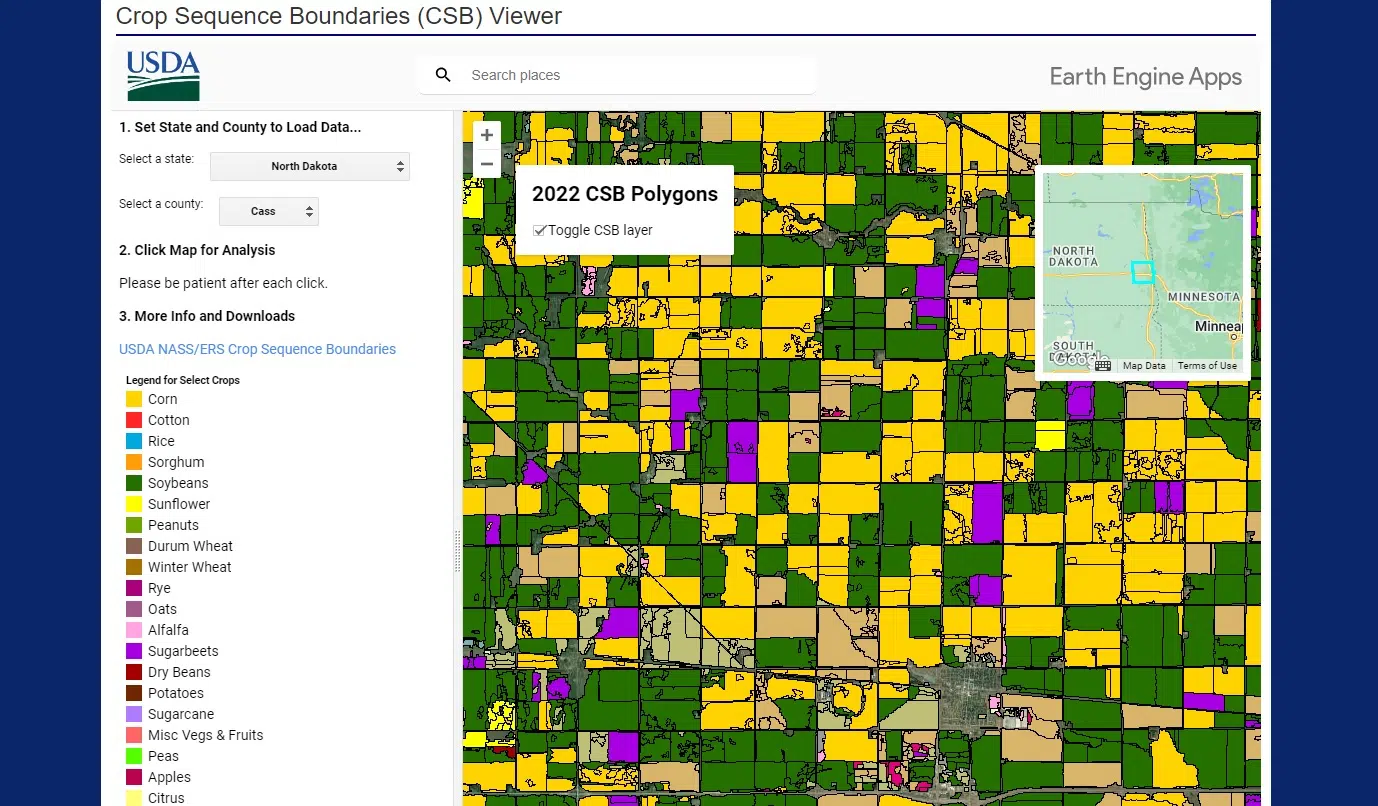The U.S. Department of Agriculture unveiled a geospatial product called Crop Sequence Boundaries (CSB) that offers public access to national-scale visual crop rotation data for the first time.
CSB is a cutting-edge map of agricultural fields that provides crop acreage estimates and historical planting decisions across the contiguous United States. The open-source product uses satellite imagery and other public data to allow users to analyze planted U.S. commodities, enhancing not only agricultural science and research, but providing producers an innovative resource to help make farming decisions.
NASS Administrator Hubert Hamer says, “Farmers will be able to use eight years of historical crop rotations to enhance their farm records or look at the management history of land that they might have recently started operating. They can also look at how their planting decisions compare in their regions.”
New farmers or farmers considering renting land could also use CSB to decide which crop to plant based on past rotations, such as corn to soy, and researchers can conduct analyses at the field level, such as studying conservation practices for a particular field. The tool fills a gap between existing data sources, offering a more comprehensive picture and data in one place that is not provided by most other field level products.
The CSB data sets for 2015 to 2022 are available for download and can be viewed at the state and county-level using an interactive map.
For NASS data and access to CSB and other geospatial resources, visit www.nass.usda.gov.
USDA news release





Comments